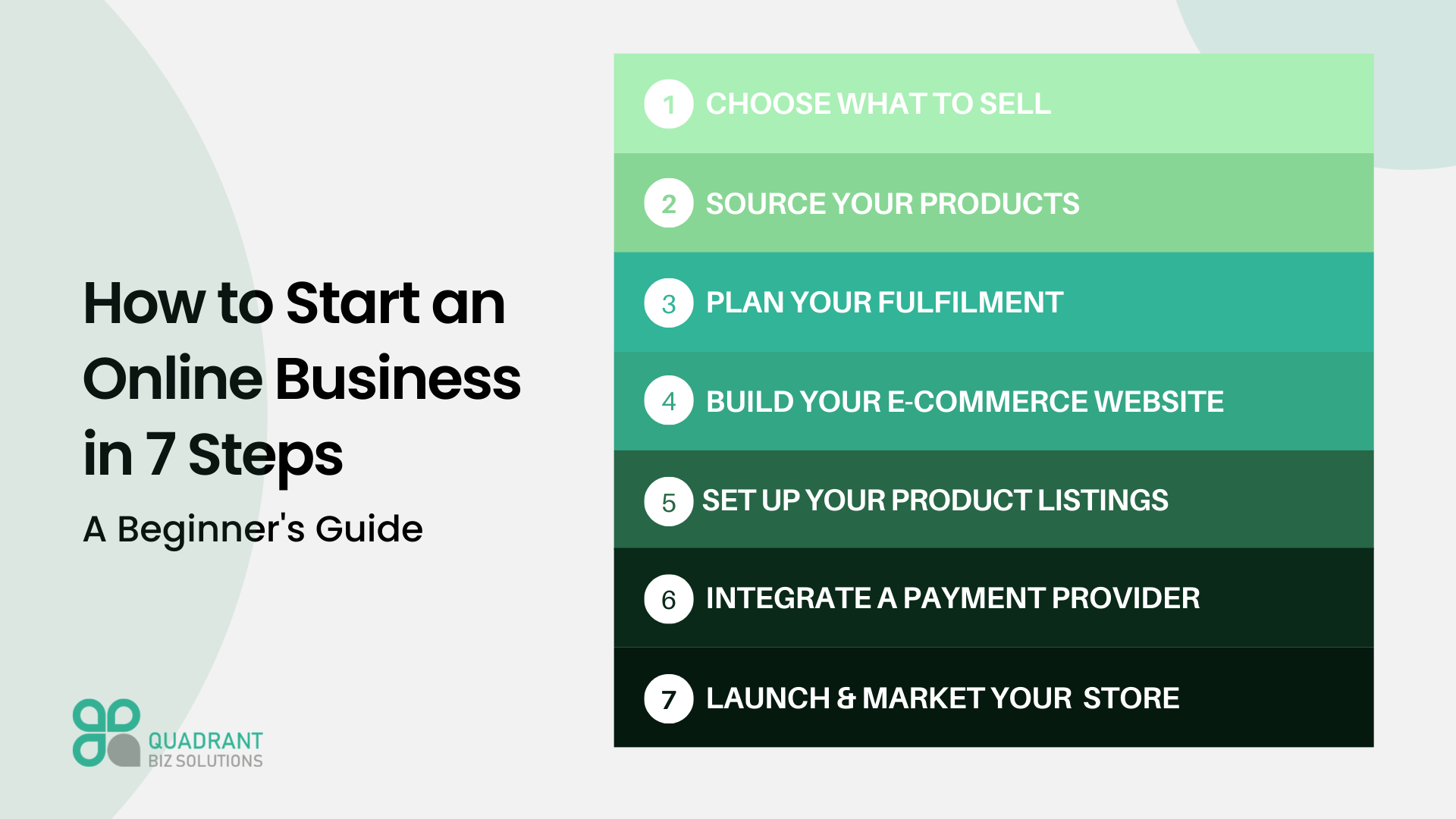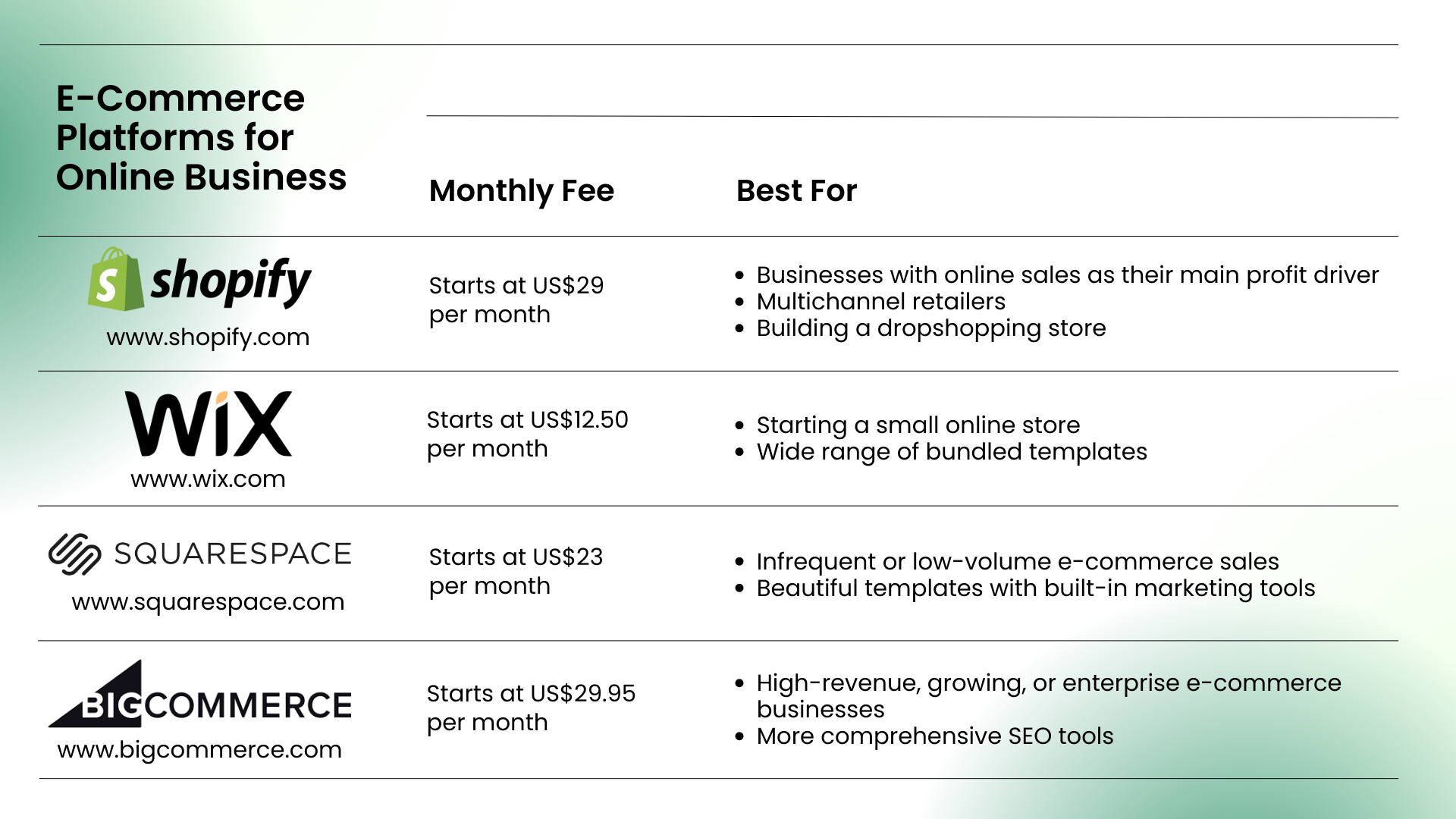 E-commerce has exploded exponentially, especially with the fall-out of the COVID-19 pandemic. With relatively low upfront costs and many great plug-and-play e-commerce platforms, it is now easier than ever to set up an online business. We have put together a step-by-step guide on how to start. Whether you are creating a new business or taking your brick-and-mortar business online, follow this guide to get up and running on the right foot.
E-commerce has exploded exponentially, especially with the fall-out of the COVID-19 pandemic. With relatively low upfront costs and many great plug-and-play e-commerce platforms, it is now easier than ever to set up an online business. We have put together a step-by-step guide on how to start. Whether you are creating a new business or taking your brick-and-mortar business online, follow this guide to get up and running on the right foot. 1. Choose what to sell
Choosing what products to sell online will require careful consideration and should be backed by credible market research and competitor analysis. The E-Commerce market is becoming an increasingly crowded space and you therefore need to determine your specific target market requirements and how your particular product will meet those needs and, more importantly, generate results. Here are some guidelines to consider: i. Is it fragile? Because you are going to be shipping products, avoid selling items that might be prone to damage or spoilage during delivery. ii. Is it timeless? Certain products such as electronics have a shorter shelf life and you may need to consider discounting older models and refreshing your inventory regularly. iii. Is it seasonal? As a general rule, it’s best not to limit your product range to those items that are only required during a specific time of year Eg Christmas, Chinese New year, Ramadhan etc.2. Source your products
One of the toughest parts of setting up a good online store is finding a supplier that you can trust. Some options are: i. Bricks-and-Mortar Store – If you already run a physical store or are connected to a network of suppliers that do, this is one of the most obvious sources for your online store merchandise. ii. Alibaba – If you are starting an online store from scratch, Alibaba has millions of products from thousands of manufacturers. You can find suppliers to manufacture products, build private labels, or purchase ready-made products to resell. Products sold on Alibaba are usually cheaper than other marketplaces and it allows buyers to negotiate directly with manufacturers. Many do not require MOQ [Minimum Order Quantity] which is a big plus for small businesses, allowing you to test out a particular product first before ordering large stocks. iii. Attend trade shows – Attending trade shows is the most efficient way to test products first-hand. You get to see the product in real life, learn about other trending products, and get comprehensive product information. It is also a good opportunity to build relationships with suppliers.3. Set up your order fulfilment
Processing, picking, and packing customer orders are a critical part of the fulfilment process. You can either perform this activity yourself or outsource to a third-party fulfilment company. i. In-house fulfilment – When starting out, many small online businesses will process, pack, and ship orders themselves. In addition to offering cost-savings, it also gives you full control over the process and helps ensure quality outcomes. ii. Third-party fulfilment – This method is ideal for e-commerce businesses that have outgrown their fulfilment space and do not want to start their own warehouse and large-scale fulfilment operation. The order fulfilment companies and third-party logistics providers (3PLs) will store your products and then pack and dispatch orders as they arrive.4. Build your e-commerce website
There are several reputable e-commerce platforms to choose from, each with its own unique set of features. Take the time to find one that is the most suitable for your business.
5. Set up your product listings
For e-commerce stores, product pages are arguably the most important element of the site. Shoppers can land on a specific page after browsing your store, from a Google search, or via a targeted advertisement. Your product page should include: i. Clear pricing – Display pricing prominently and clearly indicate whether or not the price displayed is before or after any promotions/discounts. ii. “Add to Cart” buttons – Include obvious “Add to Cart/Buy Now” button next to product images or below pricing information. iii. High-quality photos – Product photos can make or break sales. Use high-quality images that show products from all angles. iv. Accurate information – Product descriptions should be well-written and include accurate product information like size and material.6. Integrate a payment provider
Choosing an e-commerce payment gateway is essential to selling online successfully. Some of the widely used payment gateways in Malaysia are iPay88, eGHL, Razer Merchant Services, Stripe Payments, and PayPal. When making your decision, there are several important criteria to keep in mind: i. Reliability: Is it stable and able to handle high volumes of transactions without any issues? ii. Security: Is it completely secure in line with international security protocols with robust fraud prevention measures. iii. Payment options: Does it offer a range of payment options, such as credit cards, debit cards, e-wallet, and online banking. iv. Supported currencies: Does it support the major currencies used in Malaysia, such as the US Dollar [US$], Singapore Dollar [S$] and of course the Malaysian Ringgit (MYR). v. Market integrations: Is it able to integrate with your existing e-commerce platform [if any]?.7. Launch and market your online store
Once your online store is ready, you need to drive customers to your website to generate sales. There are several ways to achieve this:Organic marketing tools:
- Create social media profiles and become active on them
- Send regular email marketing
- SEO
- Word of mouth marketing
- Online advertising (Google, Facebook and Instagram, or TikTok)
- Work with influencers to promote your products
